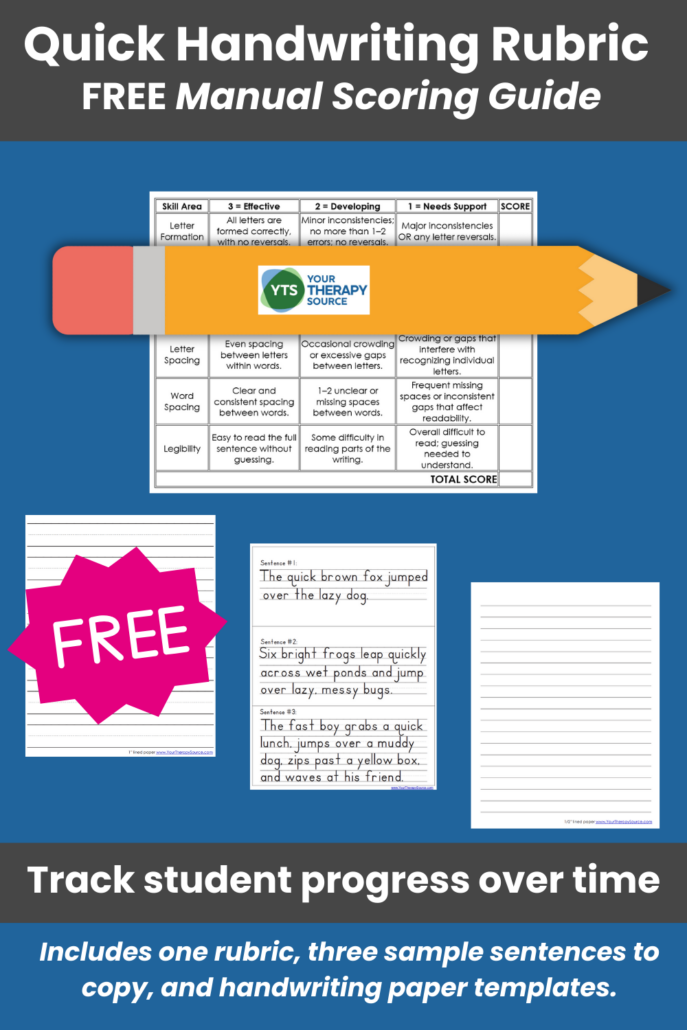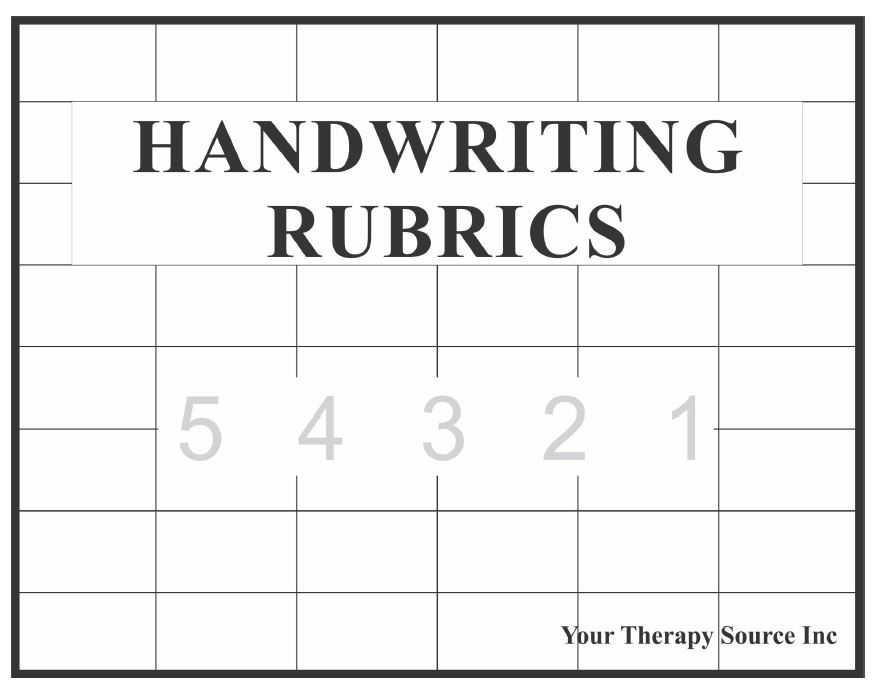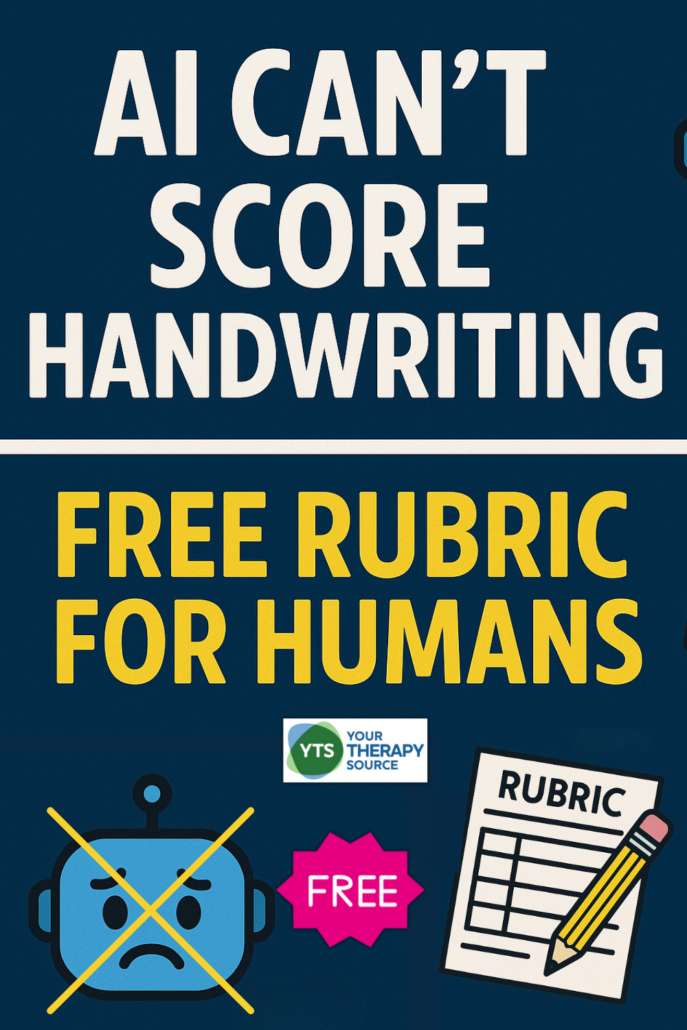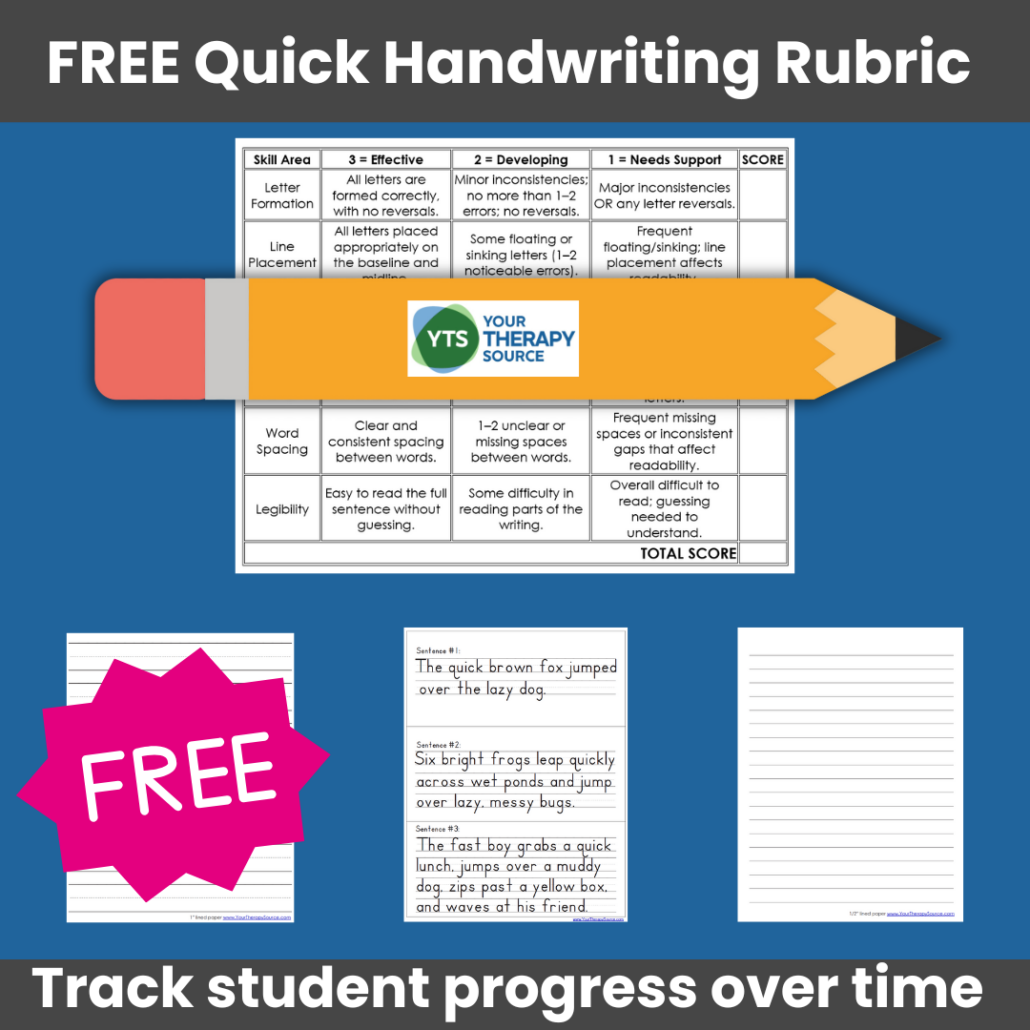Quick FREE Handwriting Rubric PDF & Watch AI Fail to Score It
Grading handwriting by hand can feel tedious, so I had a brilliant idea, why not use AI? Spoiler alert: it didn’t work. Read more about how you can easily score handwriting manually with a quick rubric, my failed experiment trying to automate it with AI, the importance of handwriting line size, and why consistency matters when scoring. You can download your FREE Quick Handwriting Rubric PDF at the bottom.

MANUAL SCORING THE QUICK HANDWRITING RUBRIC PDF
The Quick Handwriting Rubric makes evaluating handwriting simple and consistent. Here is how it works: Choose the correct line-sized paper for the student.
Have the student copy one of three prepared sentences. Score six key skill areas: letter formation, line placement, letter size, letter spacing, word spacing, and legibility.
Each skill is rated on a simple 3–2–1 scale:
3 = Effective
2 = Developing
1 = Needs Support
This method gives you objective, trackable scores while keeping handwriting evaluations quick and manageable.

Handwriting Rubrics
EPIC FAIL – TRYING TO USE AI TO SCORE A RUBRIC
Naturally, I wanted to save even more time by letting AI score the handwriting samples. I spent 6 hours trying to tweak my prompt to get AI to score a handwriting sample. I uploaded the student samples, set up an analysis, and quickly realized it was a mistake. It failed time and time again. No matter how detailed my prompt was. I even uploaded perfect penmanship to provide as a visual cue to grade my handwriting samples. AI failed. My prompt was four pages long so it was super specific. AI still failed.
Here is where AI failed:
- It could not detect small but important errors like reversed letters.
- Baseline placement confused it — slightly floating or sinking letters were not consistently flagged.
- Word spacing and letter sizing errors were often missed entirely.
- Entire words were misread if the handwriting was not perfectly neat.
Handwriting involves subtle human judgment that AI simply could not replicate. A real person is still the best tool for scoring handwriting meaningfully.

WATCH ME TRY TO USE AI TO SCORE THE QUICK HANDWRITING RUBRIC PDF
THE IMPORTANCE OF HANDWRITING LINE SIZE
One important detail in handwriting evaluation is using the correct line size for each student’s level. When we use the same lined paper every time, it helps the provider to score it more accurately. Here are examples depending upon age level or ability:
Kindergarten (5–6 years): 1″ lines with midline (dashed)
Grade 1 (6–7 years): ¾” lines, still often with midline
Grade 2 (7–8 years): ⅝” lines, midline optional
Grade 3 (8–9 years): ½” lines, transitioning to regular paper
Grades 4–5 (9–11 years): ⅜” lines, wide-ruled
Grade 6 and up (11+ years): College-ruled paper (9/32″ lines)
Choosing the right line size helps students with proper letter formation, proportional sizing, and baseline alignment. The FREE Quick Handwriting Rubric includes matching handwriting paper templates so you can maintain consistency when scoring.
WHY CONSISTENT PAPER AND THE SAME SCORER MATTER
When it comes to handwriting evaluation, consistency is critical. Always use the same lined paper each time you score. This prevents changes in line height or spacing from accidentally affecting the student’s score.
Ideally, have the same person — teacher, therapist, or provider — score the rubric every time. Just like AI failed because it could not “interpret” handwriting properly, different human scorers might notice or overlook different things.
Keeping the handwriting paper and scorer consistent ensures you are tracking true student growth, not introducing new variables that could change the results. Small differences in interpretation are natural, but minimizing them will make your data more reliable and meaningful over time.
BENEFITS OF USING A RUBRIC
Rubrics create a clear, structured path for both you and the student. Even without using AI tools, rubrics offer significant advantages:
- Consistent Progress Monitoring: Objective scores help you easily track handwriting improvements or highlight when extra support is needed.
- Consistent Sentences and Line Sizing: Using the same sentences and appropriate paper size each time removes variables that can affect performance, giving you a true measure of handwriting skills.
NEED MORE SPECIFIC HANDWRITING RUBRICS
If you are looking for more detailed handwriting and keyboarding evaluation tools, check out these resources:
Full Handwriting Rubric Bundle
Cursive Handwriting Rubric Bundle
Keyboarding Rubrics
DOWNLOAD YOUR FREE QUICK HANDWRITING RUBRIC PDF HERE
Ready to simplify handwriting evaluations and track student progress with confidence? Enter your email here to download your FREE Quick Handwriting Rubric now.



